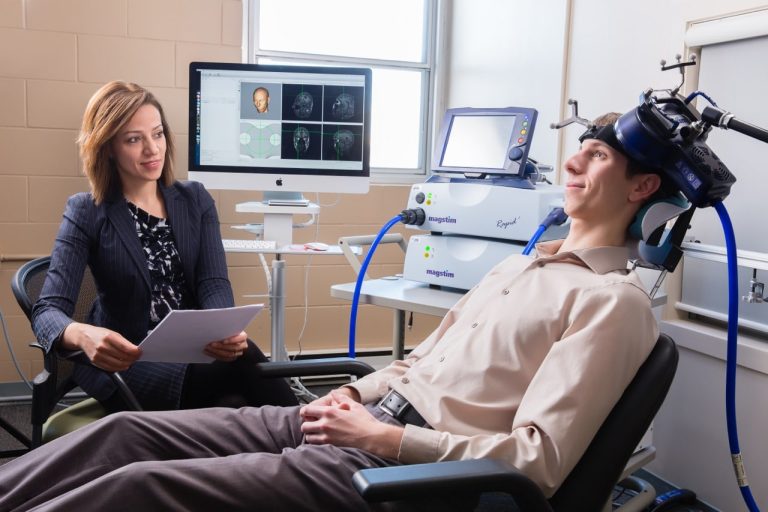Borderline Personality Disorder vs Bipolar: Key Differences Explained
This content is for informational purposes and not a substitute for medical advice. Please consult with a qualified healthcare provider for personalized guidance. Quick Answer Borderline personality disorder (BPD) and bipolar disorder both involve mood swings, but they’re distinct conditions. BPD features rapid mood changes (hours to days) triggered by relationships and rejection fears, with… Read more

Reviewed by The PsychPlus Team
August 15, 2025

This content is for informational purposes and not a substitute for medical advice. Please consult with a qualified healthcare provider for personalized guidance.
Quick Answer
Borderline personality disorder (BPD) and bipolar disorder both involve mood swings, but they’re distinct conditions. BPD features rapid mood changes (hours to days) triggered by relationships and rejection fears, with chronic identity issues. Bipolar disorder has sustained mood episodes (weeks to months) with distinct manic/depressive periods and strong genetic factors. BPD responds best to dialectical behavior therapy (DBT), while bipolar requires medication plus therapy. Research shows about 19% of people can have both conditions, making accurate diagnosis crucial.
You’re not alone if you’re confused about these conditions – even mental health professionals sometimes find them challenging to distinguish. Understanding the differences can help you get the right treatment and support.
Understanding the Basics
Both borderline personality disorder and bipolar disorder affect millions of people, but they work very differently in your brain and life. While both involve intense emotions and mood changes, the patterns, causes, and treatments are quite distinct.
The key difference lies in timing and triggers. Think of BPD like an emotional thermostat that’s constantly adjusting to what’s happening around you, while bipolar is more like distinct weather seasons that change regardless of daily events.
What Is Borderline Personality Disorder (BPD)?
Borderline personality disorder affects how you see yourself and relate to others. Research shows BPD affects about 1.1% of the general population [1]. It’s characterized by intense, unstable relationships and a pattern of emotional ups and downs that feel overwhelming and hard to control.
To receive a borderline personality disorder diagnosis, you need to show at least five of these nine patterns starting by early adulthood:
- Desperate efforts to avoid abandonment (real or imagined)
- Unstable, intense relationships that flip between loving and hating someone
- Unstable sense of who you are as a person
- Impulsive behaviors that could hurt you (spending, sex, substance use, reckless driving)
- Repeated suicide attempts, threats, or self-harm
- Rapid mood swings lasting hours, rarely more than a few days
- Chronic feelings of emptiness
- Intense anger or trouble controlling anger
- Temporary paranoid thoughts or feeling disconnected during stress
The emotional swings in BPD are highly reactive to what’s happening around you, especially in relationships. If someone important seems distant, you might spiral into despair within minutes.
What Is Bipolar Disorder?
Bipolar disorder involves distinct episodes of mania or hypomania (elevated mood) alternating with periods of depression. Research shows bipolar I affects about 1.06% of people and bipolar II affects 1.57% [2]. Unlike borderline personality disorder’s rapid shifts, bipolar episodes last weeks to months and follow their own timeline, often regardless of external events.
Bipolar I requires at least one manic episode lasting seven days (or requiring hospitalization) with elevated mood plus symptoms like grandiosity, decreased sleep need, racing thoughts, or risky behavior.
Bipolar II involves hypomanic episodes (at least four days) that are less severe than full mania, plus at least one major depressive episode.
Between episodes, many people with bipolar disorder function normally, maintaining stable relationships and work performance.
Symptom Comparison: BPD vs. Bipolar
Understanding the timing and triggers of mood changes helps distinguish these conditions.
Mood Swings and Duration
BPD mood changes happen fast and fade quickly. You might wake up feeling okay, have an argument with your partner at lunch, and spend the afternoon in emotional crisis – only to feel better by evening when you reconcile. These reactive mood shifts typically last hours, rarely more than a few days.
Bipolar episodes are sustained weather patterns, not passing storms. Clinical research confirms this crucial distinction: borderline personality disorder mood reactivity usually lasts “a few hours and only rarely more than a few days,” while bipolar episodes require a minimum of 4-7 days’ duration [3].
Impulsivity and Behavior
BPD impulsivity is constant and emotionally driven. When you’re triggered by relationship stress or abandonment fears, you might impulsively self-harm, make frantic calls to friends, or engage in risky behaviors to feel better immediately. This impulsivity happens throughout daily life and often involves self-destructive choices.
Bipolar impulsivity clusters during mood episodes. During mania or hypomania, you might start ambitious projects, make big purchases, or engage in risky sexual behavior – but these behaviors are tied to your elevated mood state. Between episodes, your impulse control typically returns to normal.
Relationship Patterns and Triggers
Some people with borderline personality disorder experience relationship patterns marked by emotional intensity, alternating between idealization and disappointment, often triggered by fears of abandonment or rejection.
Bipolar relationship difficulties are primarily episode-related. During depression, you might withdraw from loved ones. During mania, you might be irritable or make unrealistic demands. However, between episodes, relationships often stabilize and you maintain better insight into how your mood episodes affect others.
Causes and Risk Factors
The root causes of these conditions reveal why they require different treatment approaches.
BPD: Trauma and Attachment
Borderline personality disorder has a strong environmental component, particularly related to early life experiences. A comprehensive meta-analysis found that 71% of BPD patients reported at least one traumatic childhood experience [4], with specific trauma types including physical neglect (48.9%), emotional abuse (42.5%), physical abuse (36.4%), and sexual abuse (32.1%).
The condition reflects disrupted attachment patterns from inconsistent or invalidating caregiving. When children can’t rely on caregivers for emotional safety, their developing brains adapt by becoming hypervigilant to relationship threats.
BPD has moderate genetic influence with 46% heritability [5]. However, unlike bipolar disorder, no specific genes have been identified. Instead, genes likely affect how sensitive you are to environmental stress rather than directly causing the disorder.
Brain imaging research shows that people with BPD have smaller amygdala and hippocampus regions (areas involved in emotion processing), with 11% decrease in hippocampus and 13% decrease in amygdala volumes [6].
The encouraging news? Some research suggests that therapy may support functional and structural brain changes over time, especially when treatment is consistent and comprehensive.
Bipolar: Genetics and Neurobiology
Bipolar disorder is primarily a genetic condition with heritability estimates around 80% – among the highest for any psychiatric disorder. Groundbreaking 2025 research identified 298 genetic risk factors from studying over 2.8 million people [8].
Family history strongly predicts bipolar risk. Research shows that risk is 7.9, 3.3, and 1.6 times higher for first-, second-, and third-degree relatives respectively [9]. If one parent has bipolar disorder, you have about a 9% chance of developing it compared to 1% in the general population.
Unlike BPD’s trauma-based brain changes, bipolar disorder involves neurodevelopmental differences that are largely hardwired from birth. Environmental factors like stress can trigger episodes but don’t cause the underlying condition.
Diagnosis and Common Misdiagnoses
Accurate diagnosis requires time and clinical expertise. If you’re struggling with symptoms related to mood or emotion regulation, it’s important to work with a licensed provider who can conduct a full evaluation over time.
Why They’re Confused
Approximately 40% of people with BPD are initially misdiagnosed with bipolar disorder [10], compared to only 10% of people without borderline personality disorder. This happens because both conditions involve mood instability, impulsivity, and emotional intensity.
The confusion often stems from focusing on mood symptoms without considering timing patterns, triggers, and baseline functioning. Mental health professionals sometimes rely too heavily on mood questionnaires that don’t distinguish between reactive emotional swings (BPD) and sustained mood episodes (bipolar).
About 19% of people with BPD also have bipolar disorder [11]. These co-occurring cases, sometimes referred to as ‘borderpolar,’ can be more complex to diagnose and manage, requiring a nuanced, individualized approach by trained professionals.
Getting an Accurate Diagnosis
Proper diagnosis requires detailed assessment over time rather than a single evaluation. Key questions that help distinguish the conditions include:
- How long do your mood changes typically last? (Hours vs. weeks)
- What triggers your mood shifts? (Relationship events vs. no clear trigger)
- How do you function between difficult periods? (Chronic struggles vs. normal functioning)
- Do you have periods of elevated mood with decreased sleep? (Essential for bipolar)
- What’s your family psychiatric history? (Strong predictor for bipolar)
Treatment Approaches
The fundamental difference in causes means these conditions require very different treatment strategies.
Treating BPD: Therapy Options like DBT
Dialectical Behavior Therapy (DBT) is the gold standard for BPD treatment. This specialized therapy teaches four core skill sets: mindfulness, emotion regulation, distress tolerance, and interpersonal effectiveness.
DBT works remarkably well, showing significant improvements in borderline personality disorder symptoms and overall functioning. The therapy typically involves weekly individual sessions, group skills training, phone coaching between sessions, and a therapist consultation team.
Medication has limited effectiveness for BPD’s core symptoms. While antidepressants or mood stabilizers might help with specific symptoms like depression or anxiety, psychotherapy remains the primary treatment.
Treating Bipolar Disorder: Medication and Therapy
Medication management is often considered the cornerstone of long-term bipolar disorder care, typically alongside therapy and lifestyle strategies. Mood stabilizers like lithium remain the gold standard, with over 50 years of research supporting its effectiveness. Lithium not only treats episodes but significantly reduces suicide risk, the only medication proven to do so.
Combination therapy is often more effective than single medications. Adding antipsychotics like aripiprazole or olanzapine to mood stabilizers improves outcomes for many people.
Psychotherapy serves as a crucial adjunct to medication, not a replacement. Cognitive-behavioral therapy, psychoeducation, and family-focused therapy help manage the condition, improve medication adherence, and reduce relapse rates.
Can You Have Both Conditions?
When someone has both BPD and bipolar disorder, treatment becomes more complex but definitely manageable. The approach typically involves mood stabilization first using appropriate bipolar medications, followed by structured psychotherapy to address BPD features like relationship patterns and emotion regulation skills.
FAQs
Can borderline personality disorder be mistaken for bipolar disorder? Yes, and it happens frequently. Research shows that about 40% of people with BPD are initially misdiagnosed with bipolar disorder because both involve mood instability. The key differences are timing (hours vs. weeks) and triggers (relationship-focused vs. internal patterns).
Can someone have both BPD and bipolar disorder? Absolutely. Research shows that about 19% of people with borderline personality disorder also have bipolar disorder. These “borderpolar” cases require specialized treatment addressing both conditions.
How do I know which condition I (or my loved one) have? Only a qualified mental health provider can provide an accurate diagnosis. However, tracking your symptoms, duration, triggers, and family history can help guide that conversation.
Summary and Next Steps
The key differences come down to patterns and causes. BPD involves rapid, trigger-sensitive mood changes rooted in trauma and attachment disruption, responding best to intensive psychotherapy. Bipolar disorder features sustained mood episodes driven by genetic factors, requiring medication as the foundation of treatment.
Both conditions are highly treatable when properly diagnosed. Research shows that effective psychotherapy like DBT significantly improves BPD symptoms and overall functioning, while appropriate medication helps the majority of people with bipolar disorder achieve substantial improvement.
When to Seek Help and Where to Start
Consider seeking evaluation if you experience:
- Intense mood swings affecting relationships and daily functioning
- Chronic relationship difficulties or fear of abandonment
- Episodes of elevated or irritable mood lasting several days, often accompanied by decreased sleep, impulsivity, and increased goal-directed activity
- Self-harm behaviors or suicidal thoughts
- Persistent emotional instability despite your best efforts
Remember, mental health conditions are medical conditions requiring professional treatment. With accurate diagnosis and appropriate care, both BPD and bipolar disorder can be effectively managed, allowing you to build the stable, fulfilling life you deserve.
Struggling with intense mood shifts or emotional distress? PsychPlus offers same-day appointments and comprehensive evaluations by licensed mental health professionals. Schedule your visit today to get the care you deserve.
References
- Ten Have, M., Verheul, R., Kaasenbrood, A., van Dorsselaer, S., van ‘t Land, H., de Graaf, R., & Tuithof, M. (2016). Prevalence rates of borderline personality disorder symptoms: A study based on the Netherlands Mental Health Survey and Incidence Study-2. BMC Psychiatry, 16, 249. https://pubmed.ncbi.nlm.nih.gov/27435813/
- Clemente, A. S., Diniz, B. S., Nicolato, R., Kapczinski, F. P., Soares, J. C., Firmo, J. O., & Castro-Costa, É. (2015). Bipolar disorder prevalence: A systematic review and meta-analysis of the literature. Revista Brasileira de Psiquiatria, 37(2), 155–161. https://doi.org/10.1590/1516-4446-2012-1693
- Paris, J., & Black, D. W. (2015). Borderline personality disorder and bipolar disorder: What is the difference and why does it matter? Journal of Nervous and Mental Disease, 203(1), 3–7. https://pubmed.ncbi.nlm.nih.gov/25536097/
- Porter, C., Palmier-Claus, J., Branitsky, A., Mansell, W., Warwick, J., Varese, F., … & Bentall, R. P. (2020). Childhood adversity and borderline personality disorder: A meta-analysis. Acta Psychiatrica Scandinavica, 141(1), 6–20. https://pubmed.ncbi.nlm.nih.gov/31630389/
- Skoglund, C., Tiger, A., Rück, C., Pettersson, E., Asherson, P., Hellner, C., … & Lichtenstein, P. (2021). Familial risk and heritability of diagnosed borderline personality disorder: A register study of the Swedish population. Molecular Psychiatry, 26(3), 999–1008. https://pubmed.ncbi.nlm.nih.gov/31160693/
- Ruocco, A. C., Amirthavasagam, S., & Zakzanis, K. K. (2012). Amygdala and hippocampal volume reductions as candidate endophenotypes for borderline personality disorder: A meta-analysis of magnetic resonance imaging studies. Psychiatry Research: Neuroimaging, 201(3), 245–252. https://pubmed.ncbi.nlm.nih.gov/22507760/
- Kieseppä, T., Partonen, T., Haukka, J., Kaprio, J., Lönnqvist, J., & Cannon, T. D. (2004). High concordance of bipolar I disorder in a nationwide sample of twins. American Journal of Psychiatry, 161(10), 1814–1821. https://researchportal.tuni.fi/en/publications/high-concordance-of-bipolar-i-disorder-in-a-nationwide-sample-of-
- O’Connell, K.S., Koromina, M., van der Veen, T. et al. Genomics yields biological and phenotypic insights into bipolar disorder. Nature 639, 968–975 (2025). https://doi.org/10.1038/s41586-024-08468-9
- Song, J., Bergen, S. E., Kuja-Halkola, R., et al. (2015). Bipolar disorder and its relation to major psychiatric disorders: A family-based study in the Swedish population. Bipolar Disorders, 17(2), 184–193. https://onlinelibrary.wiley.com/doi/abs/10.1111/bdi.12242
- Ruggero, C. J., Zimmerman, M., Chelminski, I., & Young, D. (2010). Borderline personality disorder and the misdiagnosis of bipolar disorder. Journal of Psychiatric Research, 44(6), 405-408. https://pubmed.ncbi.nlm.nih.gov/19889426/
- Fornaro, M., Orsolini, L., Marini, S., et al. (2016). The prevalence and predictors of bipolar and borderline personality disorders comorbidity: Systematic review and meta-analysis. Journal of Affective Disorders, 195, 105-118. https://pubmed.ncbi.nlm.nih.gov/26881339/
Find a mental health care provider near you
Learn about the conditions we treat


